Comet 4 - 6407 / G-APDF / XV814
12/05/12 22:00
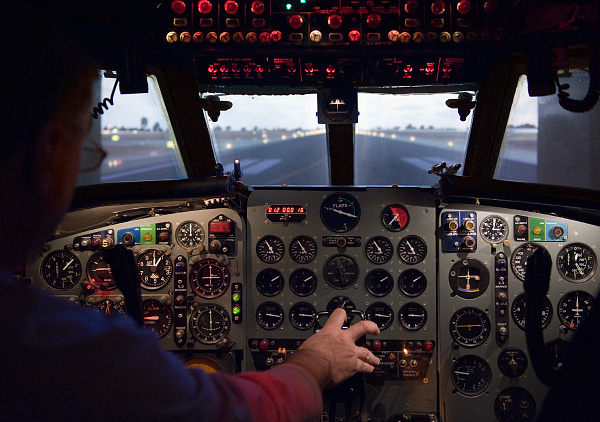
Fig. 1: Mike Pyment accelerating for take-off in XV-814. The simulation is Microsoft FSX. On this occasion, the co-pilot’s panel was not connected. Note the main instruments on the left hand pilot’s panel (P1). On the top row, the air speed indicator is a real Comet instrument, adapted by Mike; the horizon is by Simkits, and the altimeter is by Flight Illusion.
Jack Deeth and I spent a very enjoyable day end with Mike Pyment, a former Comet engineer who has painstakingly restored the cockpit of de Havilland Comet XV814 to working condition. The cockpit is connected to Microsoft Flight Simulator. Initially, Mike removed all the original gauges and radios and replaced them with off-the-shelf simulator gauges by Simkits and Flight Illusion. Recently, he has developed a way to convert aircraft instruments to function in the simulated by replacing their mechanisms with servo motors. He fabricates any necessary parts himself.
The project has reached a stage where the limit to making more of the cockpit live is what’s simulated by MSFS. Mike could look for an FSX developer to expand the computer model, or switch to X-Plane, so he could use my Comet instead. I use Mike’s library of maintenance manuals to make my Comet as accurate as possible, so it is only fair that I give something back. Meanwhile, Jack Deeth discovered Teensy USB modules, which have enormous potential for connecting hardware to flight simulators. He contacted their inventor, Paul Stoffregen, who was only too pleased to write a software library for his modules to interface with X-Plane. This made it worth looking at X-Plane more seriously.
The purpose of the trip was to introduce Mike and Jack. We started by running XV814 in FSX so Jack could familiarise himself with it. Mike has a copy of X-Plane 9; after lunch, we installed it, loaded the Comet, and tried to get a better idea about whether a conversion was even feasible. It was a pleasure to find that any hardware emulating a joystick or keyboard worked straight away, including the main flight controls, pedals, foot brakes, airbrake and throttles.
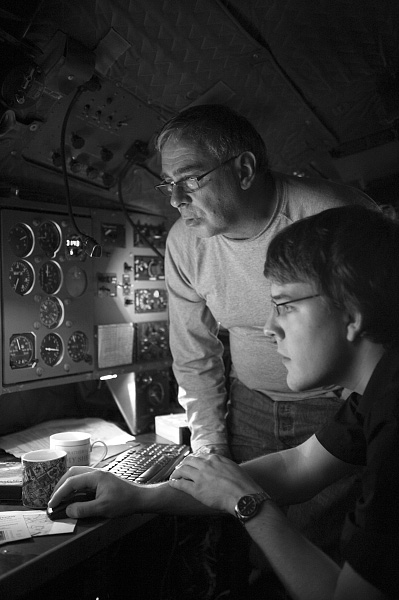
Fig. 2: Mike Pyment and Jack Deeth installing X-Plane. The
computer, interfaces and power supplies are in equipment racks
under the flight navigator’s station, with an LCD screen instead of
the second ADF receiver. The navigator’s table makes a good desk.
We each tried it, with one of us in the pilot’s seat, and another calling out speeds from the computer, and operating gear and flaps. The X-Plane Comet felt very different: heavier, with more inertia. Mike commented that the rudder actually did what it was supposed to do, and demonstrated it by inducing and controlling slip in a number of turns. We all commented on how the controls themselves were smoother in operation, and this was especially noticeable when making fine adjustments to elevator trim on approach.
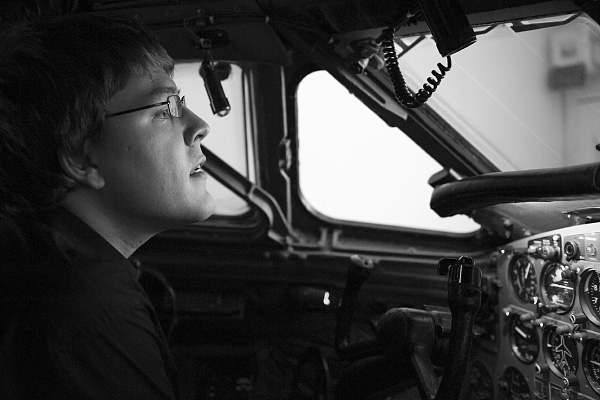
Fig. 3: Jack Deeth in the pilot’s seat.
Encouraged by this early success, we tried to bring some of the instruments on-line. Flight Illusion supports X-Plane, so we downloaded the drivers. There was no documentation for X-Plane: it took Mike’s familiarity with Flight Illusion, Jack’s familiarity with X-Plane, and some messing around with UDP ports to get it to work. As soon as data started flowing, the radios, altimeter, compass and DME sprang to life.
There were some problems. All the Flight Illusion instruments received signals accurately, but X-Plane would not receive any information. For example, the radios displayed frequencies correctly when they were changed in X-Plane, but we could not get X-Plane to acknowledge a change on the actual handset. After spending rather too long on it, we compared a beta version of the drivers with the last stable release, and discovered that there had been changes in this area. It was therefore quite possible that this was work in progress, and nothing we could do would work. It was academic anyway, since the long-term objective will be to use real ADF, NAV and COM radio heads, with Teensy modules interpreting their coded output for X-Plane.
With this in mind, the final test was with a Teensy. Jack had made an autopilot control unit with a Teensy ++. He plugged it in and it worked perfectly. Literally plug-and-play.
One area where Mike was very disappointed was X-Plane scenery. The Thames Valley area, Heathrow and Gatwick were acceptable in FSX – I was impressed to recognise landmarks like Windsor Castle – and appalling in X-Plane 9, appearing both sparsely populated and coarsely textured. X-Plane 10 has very much better scenery, and more scenery (particularly airports) can be bought and downloaded. I need to check what’s available, currently. Of course, what Mike really wants is 1960s scenery ...
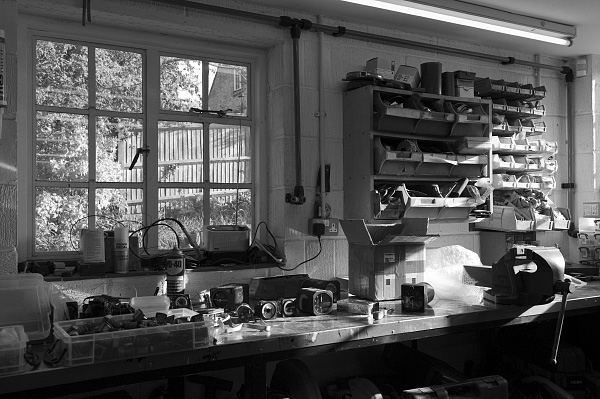
Fig 4: Mike’s workshop, with a number of Comet instruments in build.
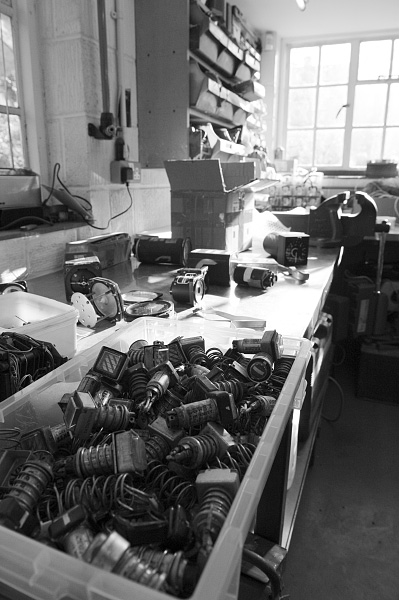
Fig 5: A vast collection of spare parts, including a box of magnetic
Dowty indicators and “doll’s eyes”, some working, some not
working, some cracked, some whole. Mike painstakingly gathers
enough parts to restore what he needs to working order.
More news will follow …
--
GMM-P (12/05/2012)
blog comments powered by Disqus
